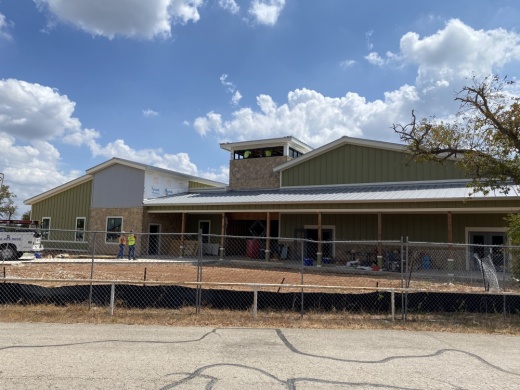The organization formed in response to the 2011 fires, and since then, it has aided the community in weathering the 2015 fires, Hurricane Harvey and COVID-19 response. The team focuses on local response and longer-term recovery.
Sheila Lowe is the executive director of the Bastrop County Long Term Recovery Team. According to Lowe, the organization fills a valuable role of local recovery response in a way the national organizations are not able.
“We have so many great national examples of organizations that talk about preparedness, but it's just something about a local organization saying this is what needs to happen because these are our shared experiences,” Lowe said.
Bastrop County Long Term Recovery Team is part of the Bastrop County Community Organization Active in Disaster group, which focuses on local aid and response to disasters. The COAD is a network of nonprofit, volunteer, public and private agencies that provides aid in the Bastrop area. Through the COAD, restaurants in the community provide food for shelters and first responders.
“People sometimes think that my lightning can't strike twice in the same way—well, we've seen it here several times,” Lowe said. “We don't want to be a community of complacency.”
Unlike emergency response, the long-term response team assists families in repairing or replacing homes. The organization also helps with evacuations and aids in finding short-term shelter.
Here are three tips from the COAD on how to prepare for a disaster:
1. Make a go bag
Having a go bag is a simple way to be prepared for immediate emergencies, such as fires or floods. Go bags include necessities such as cash, phone chargers, medications and a list of personal accounts. Preparedness can also look like uploading important documents to safe, online databases so they are always accessible.
“We started actually talking about working with neighborhoods about being prepared,” Lowe said. “One of the things that we noticed during all the events that we've had ... is that if there are other things going on in other areas ... it's whoever has the most need where the help is going to go.”
2. Prepare to shelter in place
In case of the need to shelter in place, it is important to always have at least three days' worth of food and water. Back up batteries for phones and a written list of contacts can also be helpful in such emergencies.
“One of the things that we want to make sure of is that the community and the individual families know how to take care of themselves prior to the help coming,” Lowe said. “The best way for that to happen is to be prepared.”
Families can also make a family disaster plan based on their unique situations. According to Lowe, a family disaster plan can be especially helpful for family members who may work or go to school outside of town. The disaster plan even addresses the best preparedness plan for pets.
3. Address preparedness in the workplace
The recovery team partners with the Bastrop Chamber of Commerce to address not only disaster preparedness in households, but also planning for how a disaster may impact businesses.
According to www.ready.gov, 75% of businesses without a disaster plan fail within three years of a disaster. The recovery team advises businesses to address the "6 S’s" when preparing for disasters: staff, structures, service, surroundings, space and systems.
New shelter to open at Mayfest Park
The Bastrop Long Term Recovery Team offices will be housed in the new Bastrop County Community Center at Mayfest Park. In times of need, the space will be used as a shelter managed by the Long Term Recovery Team. The facility is set to open in November.
Stay updated by visiting the Recovery Team’s Facebook page.





